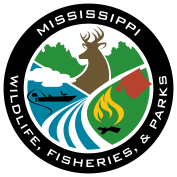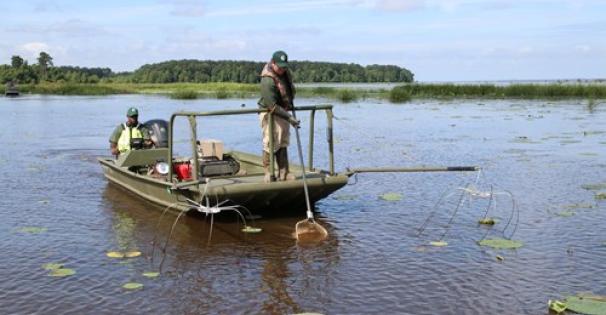
Alert
New crappie regulations went into effect on July 24, 2024, on the four Flood Control Reservoirs (Arkabutla, Sardis, Enid, and Grenada) and their spillways.
The daily creel limit for crappie is 10 fish per angler, and the daily aggregate limit is 25 fish for boats with three or more anglers. Crappie must be over 12 inches, and the pole limit remains at 4 per angler. In addition, fish may only be cleaned at designated fish cleaning stations if available, not on the water or in the boat ramp parking lots. In the spillways, the daily limit is 10 fish per angler. There are no boat or size limits in the spillways. Pole limits in the rip-rapped portions of the spillways remain 1 per angler.
Weekly fishing reports will resume the week of February 15, 2026.
Winter fishing can be good because fish school tightly. Fish bite is better after a few sunny warm days. Best time to fish is midday when the sun is high. Check water levels; except for catfish, fishing is usually better on a slow fall than a fast rise. catfish will feed in rainfall runoff even when it's cold.
Caution is advised while boating during winter water levels. Watch out for obstructions and shallow areas. Ramp access is limited due to low water levels.
Fishing Report - Updated 12/2/2025
| Species | Detail |
|---|---|
| Bass | For largemouth bass, fish soft plastics or a jig-n-pig around cover in the clearest water available. |
| Crappie | Best luck for crappie will be active sonar, trolling or drifting in the main lake or jigging in any remaining cover with jigs and/or minnows. Replace treble hooks with single hooks and/or pinch down the barbs to make releasing short fish faster and less damaging; it does no good to release dead fish. |
| Bream | Fish crawlers, small cranks, redworms or crickets 4 - 6 ft near any remaining cover (timber, brush tops, stake beds, flooded grass, etc.). |
| Catfish | Catfishing is normally best fishing natural bait on noodles (jugs) or trotlines over mudflats or with worms or stink bait in the rivers after rainfall. Check and/or move stationary gear often with the water rising or falling. |
| White Bass | Fish shad-imitating lures (jigs, small crankbaits, etc.) over a firm bottom (sand, hard clay) usually found on main lake points. There are no size or number limits on them. They taste better if immediately put into an ice/water "slush". |
